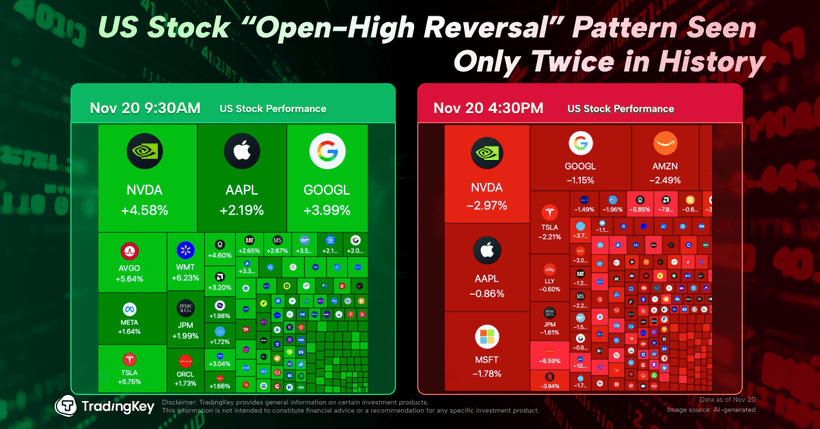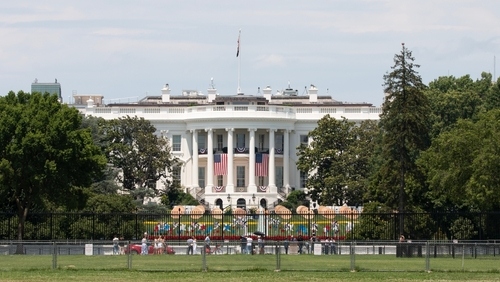USD/CAD struggles near one-week low, oscillates in a range just above mid-1.3900s

- USD/CAD consolidates in a range near a one-week low amid mixed fundamental cues.
- Hotter Canadian CPI tempers bets for a bigger BoC rate cut and underpins the CAD.
- Rebounding US bond yields revive USD demand and offer some support to the pair.
The USD/CAD pair finds some support near the mid-1.3900s, or a one-week low touched during the Asian session on Wednesday and for now, seems to have stalled this week's retracement slide from the highest level since May 2020. Spot prices, however, struggle to gain any meaningful traction, warranting some caution for bullish traders amid mixed fundamental cues.
Data published on Tuesday showed that Canada's annual inflation rate rose more than expected, to 2.0% in October and forced investors to scale back their bets for a big rate cut by the Bank of Canada (BoC) in December. This, in turn, is seen offering some support to the Canadian Dollar (CAD) and acting as a headwind for the USD/CAD pair. That said, subdued Crude Oil prices keep a lid on any meaningful appreciation for the commodity-linked Loonie.
Despite the prospect of supply disruptions from an escalation in the Russia-Ukraine conflict, signs of a build in US stockpiles fail to assist Crude Oil prices to build on a two-day-old recovery from over a two-month low touched on Monday. In fact, the American Petroleum Institute (API) reported that US inventories grew much more than expected, by 4.75 million barrels in the week to November 15, pointing to increased supply in the world’s biggest oil producer.
Apart from this, the emergence of some US Dollar (USD) dip-buying should limit any meaningful downside for the USD/CAD pair. Investors now seem convinced that US President-elect Donald Trump's policies will spur economic growth and rekindle inflationary pressures. This could restrict the Federal Reserve (Fed) from cutting interest rates, which, in turn, triggers a fresh leg up in the US Treasury bond yields and helps revive the USD demand.
Moving ahead, investors now look forward to speeches by influential FOMC members for cues about the future rate-cut path. This will play a key role in driving the US bond yields and the USD later during the North American session. Furthermore, traders will take cues from the official US Oil inventory data, which should influence the black liquid and contribute to producing short-term trading opportunities around the USD/CAD pair.
Bank of Canada FAQs
What is the Bank of Canada and how does it influence the Canadian Dollar?
The Bank of Canada (BoC), based in Ottawa, is the institution that sets interest rates and manages monetary policy for Canada. It does so at eight scheduled meetings a year and ad hoc emergency meetings that are held as required. The BoC primary mandate is to maintain price stability, which means keeping inflation at between 1-3%. Its main tool for achieving this is by raising or lowering interest rates. Relatively high interest rates will usually result in a stronger Canadian Dollar (CAD) and vice versa. Other tools used include quantitative easing and tightening.
What is Quantitative Easing (QE) and how does it affect the Canadian Dollar?
In extreme situations, the Bank of Canada can enact a policy tool called Quantitative Easing. QE is the process by which the BoC prints Canadian Dollars for the purpose of buying assets – usually government or corporate bonds – from financial institutions. QE usually results in a weaker CAD. QE is a last resort when simply lowering interest rates is unlikely to achieve the objective of price stability. The Bank of Canada used the measure during the Great Financial Crisis of 2009-11 when credit froze after banks lost faith in each other’s ability to repay debts.
What is Quantitative tightening (QT) and how does it affect the Canadian Dollar?
Quantitative tightening (QT) is the reverse of QE. It is undertaken after QE when an economic recovery is underway and inflation starts rising. Whilst in QE the Bank of Canada purchases government and corporate bonds from financial institutions to provide them with liquidity, in QT the BoC stops buying more assets, and stops reinvesting the principal maturing on the bonds it already holds. It is usually positive (or bullish) for the Canadian Dollar.








